All issues

Volume 27, Issue 3
Displaying 1-7 of 7 articles from this issue
- |<
- <
- 1
- >
- >|
-
Seiki NISHI1977Volume 27Issue 3 Pages 103-104
Published: March 30, 1977
Released on J-STAGE: July 23, 2008
JOURNAL FREE ACCESSDownload PDF (282K) -
Teruo OHASHI, Riei ICHIKAWA1977Volume 27Issue 3 Pages 105-112
Published: March 30, 1977
Released on J-STAGE: July 23, 2008
JOURNAL FREE ACCESSElectron microscopy shows that some of the alloys have a dendritic cored structure and a metastable phase TiAl3 (Ll2 type ordered structure) with a prefered growth direction <100>. Tangled dislocations are concentrated around the cored structures. The decomposition of the metastable phases during annealing at 400 to 500°C proceeds subdividing and coarsening themselves. After the completion of this process spherically grown particles begin to transform into the equilibrium phase TiAl3 having tetragonal structure. The orientation relationships between the equilibrium phase and the matrix are [001]TiAl3//[001]Al, (010)TiAl3//(110)Al. Precipitation in the supersaturated solid solution of Al-Ti alloys anneaed at 400 to 500°C can be metallographically classified: i) precipitation within matrix grains accompanying coherent strain, ii) prefered precipitation on the dislocations, and iii) precipitation caused by a grain boundary reaction.View full abstractDownload PDF (3447K) -
Takeharu WATANABE, Hideo MARUMOTO, Takashi MORO, Makoto TERADA1977Volume 27Issue 3 Pages 113-121
Published: March 30, 1977
Released on J-STAGE: July 23, 2008
JOURNAL FREE ACCESSWith a given plate thickness from 6.0mm to 25.4mm and under a given welding conditions, the depth of penetration of weld made by DCSP TIG arc is approximately calculable from the equation of proportional distribution. Underbead reinforcement size is easily controllable by using the DCSP TIG arc. In the case of butt welding of the bead-on-plate and V groove provided with the backing strip, porosities are concentrated in a range less than approximately 3mm in depth from the top of the reinforcement. Porosities hardly exist in a part of weld refused by the DCSP TIG arc. The number of porosities can be decreased by increasing the depth of penetration.View full abstractDownload PDF (1412K) -
Hideaki YOSHIDA, Yo TAKEUCHI1977Volume 27Issue 3 Pages 122-128
Published: March 30, 1977
Released on J-STAGE: July 23, 2008
JOURNAL FREE ACCESSA new method to estimate the brazability of brazing sheet is proposed in which a holed brazing sheet and a pipe are used. The pipe is passed through the brazing sheet and is brazed. The size of the gap when incompletely brazed or the value of (Dc-Do) is applied to estimate the brazability, where Do is the outer diameter of the pipe and Dc is the critical diameter of the hole in the brazing sheet for complete brazing of the joint. The factors governing the brazability of the brazing sheet were examined in this method, such as i) volume of brazing alloy, ii) thickness of the cladding layer, ii) vacuum level, iv) bismuth addition in brazing alloy, and v) silicon content in brazing alloy. The brazability is more quantitatively estimative in this method than in measuring the flow factor.View full abstractDownload PDF (1436K) -
Shigenori HORI, Hiroaki KITAGAWA, Tomoki MASUTANI, Akira TAKEHARA1977Volume 27Issue 3 Pages 129-137
Published: March 30, 1977
Released on J-STAGE: July 23, 2008
JOURNAL FREE ACCESSSolidified structure, mechanical properties and phase decomposition were investigated on the Al-(0.23.4)%Zr alloys chill-cast or splat quenched to extend the solid solubility of Zr in Al. Slowly cooled alloys containing 1.13.4%Zr have a equilibrium Al3Zr phase in the shape of a large needle. Chill-cast alloys containing 0.2 to 1.4%Zr have f.c.c. solid solutions highly supersaturated. Chill-cast alloys containing Zr more than 1.7% have a non-equilibrium Ll2 structure. The metastable Al3Zr plays active nuclei for the angular structure and leads to grain refining. Presence of the anglar structure containing more of Zr results in abrupt increase of strength of the alloys. Decomposition of the supersaturated solid solution during tempering occurs by forming a spherical intermediate cubic Al3Zr phase. The spherical precipitate is very slowly coarsened and then preferentially grows along the definite matrix direction. The grain boundary reaction is also observed in the early stage of againg. These precipitates are metastable Al3Zr of Ll2 type structure which is stable during prolonged aging time.View full abstractDownload PDF (3467K) -
Shuhei OSAKI, Yo KOJIMA, Tsuneo TAKAHASHI1977Volume 27Issue 3 Pages 138-144
Published: March 30, 1977
Released on J-STAGE: July 23, 2008
JOURNAL FREE ACCESSStrained electrode reactions of 5083 alloy in 5.3%NaCl + 0.3%H2O2 aqueous solution were studied as functions of tensile stress, strain, electrode potential, solution pH and microstructure. The susceptibility to stress corrosion cracking can be rapidly evaluated by means of a constant strain rate method under potentiostatic control. The shape of current/strain curves shows that the anodic dissolution is controlled by the rate of oxide film rupture and by the subsequent rate of repassivation. The grain boundary with β precipitates is attacked at lower potential and by application of strain less than that in grain body. The alloy more sensitive to stress corrosion cracking shows extended difference in breakdown potential between grain boundary and grain body. The breakdown potential for grain boundary corresponds with the critical potential for stress corrosion cracking. Typical stress corrosion cracking occurs in the potential range over this potential and below the breakdown potential for grain body. The anodic current density at the crack advancing edge is sufficient to account for the observed crack propagation rate. The stress corrosion cracks advance pricipally by electrochemical anodic dissolution.View full abstractDownload PDF (1050K) -
Takakazu TANAKA, Chozo FUJIKURA1977Volume 27Issue 3 Pages 145-158
Published: March 30, 1977
Released on J-STAGE: July 23, 2008
JOURNAL FREE ACCESSDownload PDF (1585K)
- |<
- <
- 1
- >
- >|